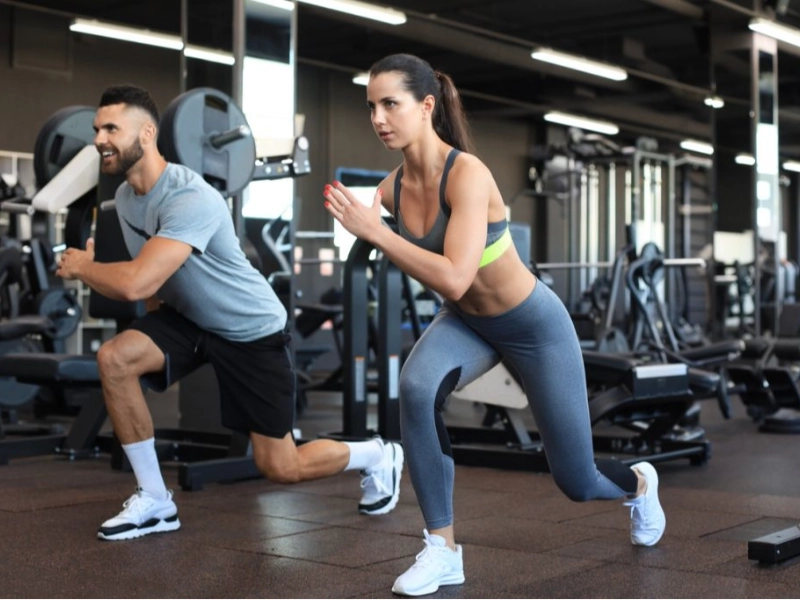Whether you’re lifting weights, running, or hitting a high-intensity interval session, your performance starts well before the first rep. Skipping a warm-up or rushing through your movements can set you up for injury instead of results. That’s why understanding how to prep your body and move correctly is key to unlocking safer, stronger, and more effective workouts.
This guide covers the most important warm-up strategies and form cues that help you avoid injuries and get the most out of every session.
Why Your Warm-Up Matters More Than You Think
Warming up is not just a ritual—it prepares your muscles, joints, and nervous system for physical stress. When done right, it improves circulation, increases joint mobility, and activates key muscles.
A proper warm-up also helps your brain tune into your movement patterns, making it easier to lift with better form or run with smoother strides. You lower your risk of injury, improve flexibility, and mentally shift into workout mode.
A few dynamic stretches or mobility drills can mean the difference between a strong, focused session or a pulled muscle that sets you back for weeks.
Dynamic Over Static: Choose the Right Warm-Up
Start your workout with dynamic movements, not static holds. Static stretches, like holding a hamstring stretch, are better suited for post-workout recovery. Instead, use dynamic warm-ups that mimic the exercises you’ll be doing.
Here are a few effective warm-up moves:
- Leg swings: Loosen up hips and hamstrings
- Arm circles: Activate shoulder mobility
- Bodyweight squats or lunges: Warm up the lower body
- Glute bridges: Fire up the glutes and lower back
- Inchworms or world’s greatest stretch: Improve full-body flexibility
Spend about 5 to 10 minutes doing dynamic warm-ups that match your workout focus. This helps build a strong physical foundation for the movements ahead.
Activate the Right Muscles
A common injury risk comes from poor muscle activation. For example, if your glutes aren’t firing before a squat, your lower back might take on the load. If your core isn’t engaged before a press, your shoulders and spine become unstable.
Use activation drills like:
- Resistance band lateral walks for the hips
- Scapular wall slides for shoulder positioning
- Dead bugs or planks to prep your core
These small movements help switch on the right muscles so they’re ready to do their job when it counts.
Perfect Your Form Before Adding Load
No matter how experienced you are, form should always come before intensity. Lifting heavy with bad technique is one of the most common reasons people get injured at the gym.
Before increasing resistance or speed, focus on form:
- Are your knees tracking over your toes during squats?
- Is your back straight and braced during deadlifts?
- Are your shoulders down and back during overhead presses?
- Is your spine neutral during pushups or planks?
Even small mistakes can lead to muscle strain or joint pain over time. If you’re unsure, film yourself or ask a coach to check your mechanics.
Learn to Brace Your Core the Right Way
Bracing your core isn’t just about sucking in your stomach. It’s about creating tension through your trunk to stabilize your spine.
Here’s how to do it:
- Inhale through your nose
- Expand your belly and sides
- Tighten your abs like someone’s going to punch you
- Keep this tension while you move
A strong brace keeps your back safe, especially during compound lifts like squats, rows, and presses. Make this part of every movement pattern, and your balance, posture, and power will all improve.
Control the Tempo of Your Reps
Fast reps with no control increase your chances of joint injuries, especially under load. Instead of rushing through your workout, slow things down.
Use a tempo like this:
- 2 seconds up
- 1 second pause
- 3 seconds down
This tempo keeps your muscles under tension longer and helps you spot weak areas in your form. You’ll build better body awareness, more strength, and safer movement habits.
Focus on Range of Motion, Not Just Reps
Half-repping exercises doesn’t just limit your gains—it can lead to imbalances and strain. Always train through your full, safe range of motion.
For example:
- Squat to at least parallel, not halfway down
- Pull the bar to your chest on rows
- Lower your pushups until your chest is just above the floor
Full range reps train your joints, muscles, and connective tissue evenly. They also help prevent long-term stiffness or imbalance that can lead to injury.
Finish With a Cooldown and Mobility Work
Your workout doesn’t end when you stop sweating. Cooling down properly allows your body to recover and return to a resting state. It reduces soreness and keeps your joints moving well.
A good cooldown includes:
- Gentle walking or cycling for 3–5 minutes
- Static stretching for tight areas like hamstrings, hip flexors, or pecs
- Foam rolling or self-massage for muscle recovery
Taking 5 to 10 minutes at the end of each session can dramatically lower your chance of injury and improve how you feel the next day.
Final Word on Injury Prevention
The best workouts are the ones you can do consistently without setbacks. And consistency only happens when you train smart. Start every session with purpose. Warm up dynamically, focus on control, and move with intention. That’s how you stay strong, pain-free, and progressing—one safe rep at a time.










